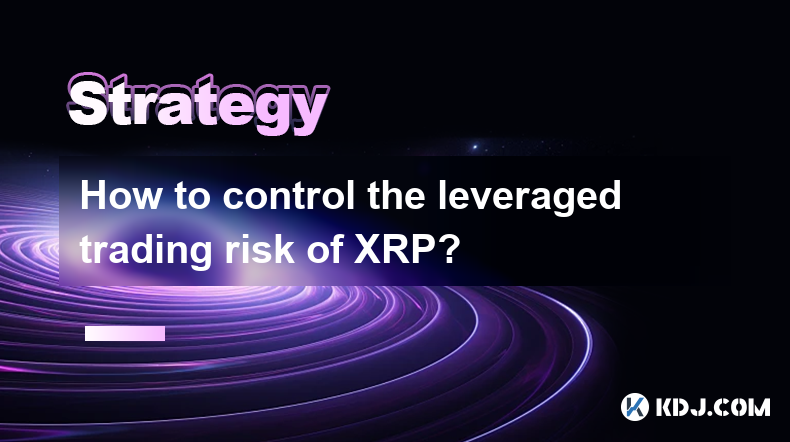-
 Bitcoin
Bitcoin $84,512.3183
-0.50% -
 Ethereum
Ethereum $1,588.1225
0.23% -
 Tether USDt
Tether USDt $0.9996
-0.01% -
 XRP
XRP $2.0642
0.48% -
 BNB
BNB $591.8173
0.47% -
 Solana
Solana $134.4792
-0.11% -
 USDC
USDC $0.9999
0.01% -
 Dogecoin
Dogecoin $0.1574
2.08% -
 TRON
TRON $0.2420
-2.16% -
 Cardano
Cardano $0.6293
2.51% -
 UNUS SED LEO
UNUS SED LEO $9.2288
1.66% -
 Chainlink
Chainlink $12.6112
1.23% -
 Avalanche
Avalanche $19.1082
0.52% -
 Toncoin
Toncoin $2.9983
2.24% -
 Stellar
Stellar $0.2408
0.84% -
 Shiba Inu
Shiba Inu $0.0...01225
4.64% -
 Hedera
Hedera $0.1660
2.02% -
 Sui
Sui $2.1233
0.65% -
 Bitcoin Cash
Bitcoin Cash $337.9337
1.98% -
 Litecoin
Litecoin $75.8547
1.24% -
 Polkadot
Polkadot $3.6527
0.78% -
 Hyperliquid
Hyperliquid $16.9003
-0.50% -
 Dai
Dai $1.0000
0.02% -
 Bitget Token
Bitget Token $4.4061
1.14% -
 Ethena USDe
Ethena USDe $0.9992
0.01% -
 Pi
Pi $0.6465
4.78% -
 Monero
Monero $214.7733
-0.74% -
 Uniswap
Uniswap $5.1912
0.85% -
 Pepe
Pepe $0.0...07309
1.65% -
 OKB
OKB $50.3150
0.15%
Which cryptocurrencies are supported as collateral in Binance margin trading?
Binance supports a variety of cryptocurrencies like BTC, ETH, and BNB as collateral for margin trading, allowing users to leverage their trades effectively.
Apr 06, 2025 at 06:36 pm

In the world of cryptocurrency trading, margin trading has become a popular method for traders to amplify their potential returns. Binance, one of the leading cryptocurrency exchanges, offers margin trading services where users can borrow funds to trade with leverage. A crucial aspect of margin trading is the collateral that traders must provide to secure their borrowed funds. This article will explore the various cryptocurrencies that Binance supports as collateral for margin trading.
Understanding Margin Trading on Binance
Margin trading on Binance allows users to borrow funds to increase their trading position. This can potentially lead to higher profits, but it also comes with increased risk. To engage in margin trading, users must provide collateral, which acts as a security deposit for the borrowed funds. If the market moves against the trader's position, the collateral can be liquidated to cover the losses.
Types of Margin Trading on Binance
Binance offers two types of margin trading: Cross Margin and Isolated Margin. In Cross Margin, the entire account balance is used as collateral, which can help prevent liquidation but also puts the entire account at risk. In contrast, Isolated Margin allows users to allocate a specific amount of collateral to a single position, limiting the risk to that particular trade.
Cryptocurrencies Supported as Collateral
Binance supports a wide range of cryptocurrencies that can be used as collateral for margin trading. Here is a detailed list of the supported cryptocurrencies:
- BTC (Bitcoin): As the most widely recognized cryptocurrency, Bitcoin is a popular choice for collateral due to its liquidity and stability.
- ETH (Ethereum): Ethereum, the second-largest cryptocurrency by market cap, is also widely accepted as collateral on Binance.
- BNB (Binance Coin): Binance's native token, BNB, can be used as collateral and often comes with benefits such as reduced trading fees.
- USDT (Tether): As a stablecoin pegged to the US dollar, USDT provides a stable value for collateral, making it a preferred choice for many traders.
- BUSD (Binance USD): Another stablecoin, BUSD, is also supported and offers similar stability to USDT.
- XRP (Ripple): XRP, known for its fast transaction speeds, is another cryptocurrency that can be used as collateral.
- ADA (Cardano): Cardano's ADA is supported as collateral, offering traders another option for securing their margin trades.
- DOT (Polkadot): Polkadot's DOT can be used as collateral, providing access to a blockchain interoperability platform.
- LINK (Chainlink): Chainlink's LINK, a decentralized oracle network, is also supported as collateral.
- LTC (Litecoin): Litecoin, often referred to as the silver to Bitcoin's gold, is another cryptocurrency that can be used as collateral.
How to Use Cryptocurrencies as Collateral on Binance
To use cryptocurrencies as collateral for margin trading on Binance, follow these steps:
- Log into your Binance account: Ensure you have a verified account on Binance.
- Navigate to the Margin Trading section: Click on the "Margin" tab in the top navigation bar.
- Select the type of margin trading: Choose between Cross Margin and Isolated Margin based on your trading strategy.
- Transfer funds to your Margin Wallet: Click on "Transfer" to move your chosen cryptocurrency from your Spot Wallet to your Margin Wallet.
- Select the cryptocurrency for collateral: Choose the cryptocurrency you want to use as collateral from the list of supported assets.
- Set up your margin trade: Enter the amount you wish to borrow and the leverage you want to use.
- Monitor your position: Keep an eye on your margin position and ensure your collateral remains sufficient to avoid liquidation.
Risks and Considerations
Using cryptocurrencies as collateral for margin trading comes with several risks and considerations. Market volatility can lead to rapid changes in the value of your collateral, potentially triggering liquidation. Leverage amplifies both gains and losses, so it's crucial to use it wisely. Additionally, interest rates on borrowed funds can add to the cost of trading, so it's important to factor these into your trading strategy.
Managing Collateral and Liquidation
Effective management of your collateral is essential to avoid liquidation. Binance provides tools such as Margin Level and Liquidation Price to help traders monitor their positions. Margin Level indicates the ratio of your account equity to your borrowed funds, while Liquidation Price shows the price at which your position will be liquidated. Keeping an eye on these metrics can help you make informed decisions about adjusting your collateral or closing positions.
Frequently Asked Questions
Q: Can I use multiple cryptocurrencies as collateral for a single margin trade on Binance?
A: Yes, Binance allows you to use multiple cryptocurrencies as collateral for a single margin trade. You can transfer different cryptocurrencies to your Margin Wallet and use them collectively to secure your borrowed funds.
Q: What happens if the value of my collateral drops significantly?
A: If the value of your collateral drops significantly, your Margin Level will decrease. If it falls below the maintenance margin level, your position may be liquidated to cover the borrowed funds. It's important to monitor your positions and add more collateral if necessary to avoid liquidation.
Q: Are there any fees associated with using cryptocurrencies as collateral on Binance?
A: Yes, there are fees associated with margin trading on Binance. These include interest rates on borrowed funds and potential liquidation fees if your position is liquidated. It's important to review Binance's fee schedule and factor these costs into your trading strategy.
Q: Can I withdraw my collateral while it is being used for margin trading?
A: No, you cannot withdraw your collateral while it is being used to secure a margin trade. To withdraw your collateral, you must first close your margin position and transfer the funds back to your Spot Wallet.
Disclaimer:info@kdj.com
The information provided is not trading advice. kdj.com does not assume any responsibility for any investments made based on the information provided in this article. Cryptocurrencies are highly volatile and it is highly recommended that you invest with caution after thorough research!
If you believe that the content used on this website infringes your copyright, please contact us immediately (info@kdj.com) and we will delete it promptly.
- 3 Cryptos Heating Up, But This Time, Price-Conscious Buyers Are Stealing the Spotlight
- 2025-04-19 09:15:13
- This Week in Bitcoin: BTC Remains Stable Around $84k
- 2025-04-19 09:15:13
- Decentralized economy isn't always that decentralized
- 2025-04-19 09:10:13
- DIA to Host an AMA on X on April 23rd at 16:00 UTC
- 2025-04-19 09:10:13
- American Asset Management Company Canary Capital Has Taken a New Leap
- 2025-04-19 09:05:13
- Canary Capital Files to Launch the First US-Listed ETF Focused on Tron's TRX Token That Includes the Staking Feature
- 2025-04-19 09:05:13
Related knowledge

What does SHIB's Cardano coefficient below 0.3 indicate?
Apr 19,2025 at 08:00am
What does SHIB's Cardano coefficient below 0.3 indicate? The Cardano coefficient, often used within the cryptocurrency community, is a metric that helps investors and analysts understand the correlation between different cryptocurrencies. When it comes to SHIB (Shiba Inu) and its Cardano coefficient falling below 0.3, this indicates a relatively low cor...

Should I reverse the operation when the long-short ratio of SHIB perpetual contract reaches 3:1?
Apr 19,2025 at 04:36am
Understanding the Long-Short Ratio in SHIB Perpetual ContractsThe long-short ratio is a key metric in the world of cryptocurrency trading, particularly when dealing with perpetual contracts. For SHIB (Shiba Inu) perpetual contracts, this ratio indicates the balance between traders who are betting on the price of SHIB to rise (long positions) and those b...

Where is the average cost line for short-term holders of SHIB?
Apr 19,2025 at 03:42am
The average cost line for short-term holders of SHIB, or Shiba Inu cryptocurrency, is a critical indicator that provides insights into the behavior and sentiment of investors who have held the token for a shorter duration. This line represents the average price at which these short-term holders acquired their SHIB tokens. Understanding where this line s...

What should I do after the head and shoulders top pattern of XRP appears?
Apr 19,2025 at 01:28am
The head and shoulders top pattern is a significant technical analysis indicator that many traders and investors in the cryptocurrency market, including those involved with XRP, pay close attention to. When this pattern appears in the price chart of XRP, it is often interpreted as a bearish signal, suggesting that a reversal in the current uptrend may b...

What does it mean for XRP to confirm the breakout of the previous high and then step back?
Apr 19,2025 at 04:42am
What does it mean for XRP to confirm the breakout of the previous high and then step back? In the world of cryptocurrency, technical analysis plays a crucial role in understanding market movements and potential future trends. One specific scenario that traders and investors often analyze is when a cryptocurrency, such as XRP, confirms the breakout of a ...

How to control the leveraged trading risk of XRP?
Apr 18,2025 at 09:50pm
Leveraged trading of XRP, like any other cryptocurrency, involves significant risk due to the high volatility of the market. Understanding and controlling these risks is crucial for any trader looking to engage in leveraged trading. This article will guide you through the essential steps and strategies to manage the risks associated with leveraged tradi...

What does SHIB's Cardano coefficient below 0.3 indicate?
Apr 19,2025 at 08:00am
What does SHIB's Cardano coefficient below 0.3 indicate? The Cardano coefficient, often used within the cryptocurrency community, is a metric that helps investors and analysts understand the correlation between different cryptocurrencies. When it comes to SHIB (Shiba Inu) and its Cardano coefficient falling below 0.3, this indicates a relatively low cor...

Should I reverse the operation when the long-short ratio of SHIB perpetual contract reaches 3:1?
Apr 19,2025 at 04:36am
Understanding the Long-Short Ratio in SHIB Perpetual ContractsThe long-short ratio is a key metric in the world of cryptocurrency trading, particularly when dealing with perpetual contracts. For SHIB (Shiba Inu) perpetual contracts, this ratio indicates the balance between traders who are betting on the price of SHIB to rise (long positions) and those b...

Where is the average cost line for short-term holders of SHIB?
Apr 19,2025 at 03:42am
The average cost line for short-term holders of SHIB, or Shiba Inu cryptocurrency, is a critical indicator that provides insights into the behavior and sentiment of investors who have held the token for a shorter duration. This line represents the average price at which these short-term holders acquired their SHIB tokens. Understanding where this line s...

What should I do after the head and shoulders top pattern of XRP appears?
Apr 19,2025 at 01:28am
The head and shoulders top pattern is a significant technical analysis indicator that many traders and investors in the cryptocurrency market, including those involved with XRP, pay close attention to. When this pattern appears in the price chart of XRP, it is often interpreted as a bearish signal, suggesting that a reversal in the current uptrend may b...

What does it mean for XRP to confirm the breakout of the previous high and then step back?
Apr 19,2025 at 04:42am
What does it mean for XRP to confirm the breakout of the previous high and then step back? In the world of cryptocurrency, technical analysis plays a crucial role in understanding market movements and potential future trends. One specific scenario that traders and investors often analyze is when a cryptocurrency, such as XRP, confirms the breakout of a ...

How to control the leveraged trading risk of XRP?
Apr 18,2025 at 09:50pm
Leveraged trading of XRP, like any other cryptocurrency, involves significant risk due to the high volatility of the market. Understanding and controlling these risks is crucial for any trader looking to engage in leveraged trading. This article will guide you through the essential steps and strategies to manage the risks associated with leveraged tradi...
See all articles
























































































